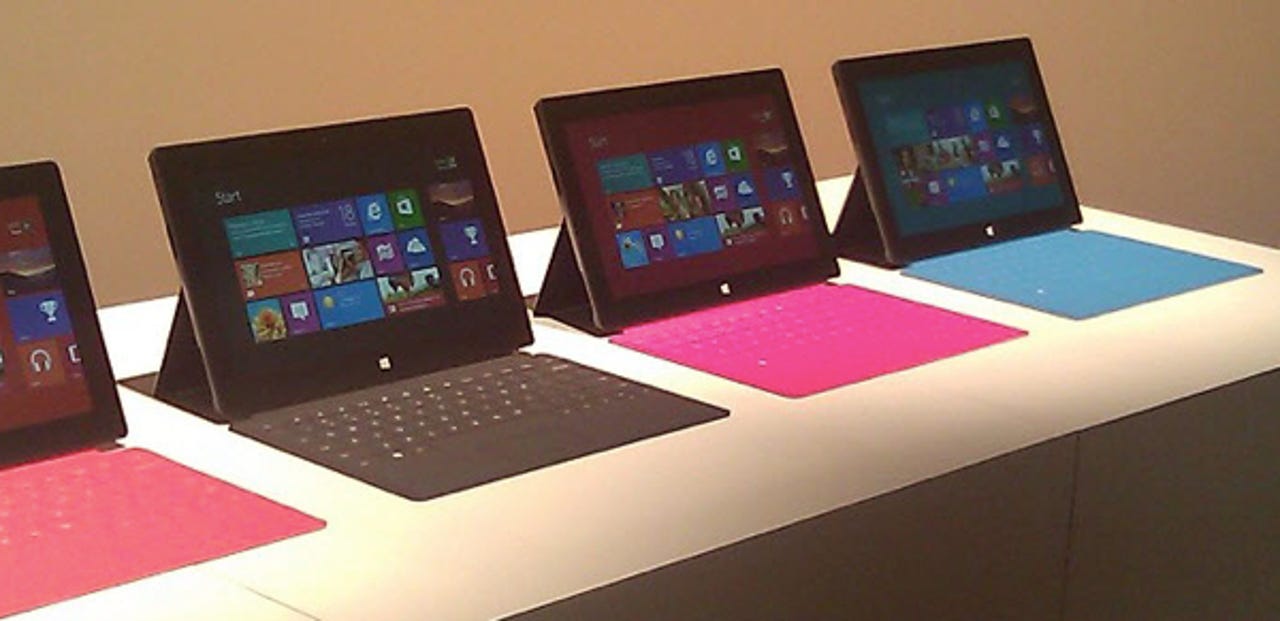Surface RT: A tweener device for Windows laptop users


The Microsoft Surface RT is either the greatest tablet in the world or the worst, depending on who you ask. The reviews have been all over the place, pegging the Surface RT as highly recommended all the way to stating it is flat out bad. Many words have been written trying to determine exactly what the Surface RT is aimed to accomplish, and ZDNet's Matt Baxter-Reynolds has finally figured it out.
"The Office side of this is perfect. Everything else that will make Windows RT and Surface attractive in the consumer and business markets is playing catch-up." — Matt Baxter-Reynolds
Matt has been using Windows 8 full time since March, so he is very familiar with its inner workings. My conversations with him make it clear he likes Windows 8, likes it a lot in fact. When he received his Surface RT last week I was most interested in getting his take on the new device, as he would be concentrating on the form and function.
See also:
- Surface: Is it "Microsoft's iPad", or something else?
- Hands on with Microsoft's Surface RT: Can it hit the sweet spot?
The article I have been waiting for Matt to write has finally appeared, and anyone considering a Surface RT purchase should give it a read. Matt details his experience with the Surface RT and the great frustration he has using it as a Metro tablet. That frustration is due to laggy performance and Metro apps that don't live up to the tablet competition.
As Matt details, that frustration disappeared when he started using Word on the Surface RT. It became obvious to him that the whole point of Microsoft was likely to get Office running on the ARM platform, and running well. He even suggested it should be called the Wordbook as the user experience is so good on the Surface RT.
This leads me to believe something I have been suspecting for a while, that the Surface RT is a "tweener" device aimed at those who already carry a Windows laptop everywhere. Those folks who never leave the house without a bulky backpack with laptop in tow.
The Surface RT is aimed at those folks. It's not a great tablet based on lots of reviews, including Matt's. It's not quite a great laptop, but with Office and the special keyboard it can pinch hit for one. In other words a tweener device that fits between a solid tablet and a good laptop. One that the aforementioned laptop junky can use to lighten his/her load in the backpack.
I think Matt nailed it in his review of the Surface RT. It didn't start to click for him what it was designed for until he started using Office, particularly Word, on the device. I suspect his use incorporated a keyboard although he doesn't state that implicitly.
If that's the case then the Surface didn't click for Matt until he stopped using it as a Metro tablet and used it as a Windows laptop. Don't forget that Office on the Surface RT doesn't run in the Metro side of the device, it is really a desktop app. Which leads me to believe that Matt nailed it on the head -- the Surface RT is Microsoft's effort to get Office on the ARM platform. A tweener device, if you will.
Another colleague I respect immensely had a different take on the Surface RT user experience in his review. Ed Bott found it to be a decent tablet and a good laptop companion rather than a replacement. He "enthusiastically recommended" the Surface RT for such use, and I put good faith in his recommendation. This quote from Ed's review sums it up nicely:
"It’s not a replacement for a full-strength PC, but as a companion device that offers light weight, excellent entertainment options, and the ability to use full-featured Office apps, it’s irresistible."
Ed's review captures it nicely and is also a must read for those considering a Surface RT purchase. As he perfectly summed up the device:
It’s more than an iPad, and less than a PC.
Sounds like a tweener device to me.